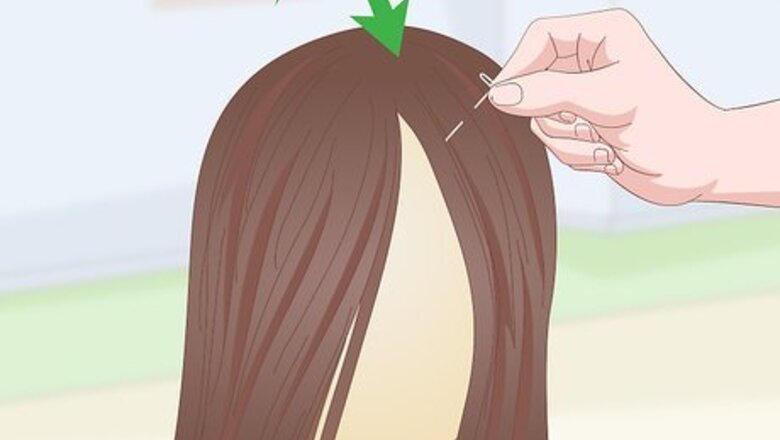
views
Trimming the Length of Your Wig
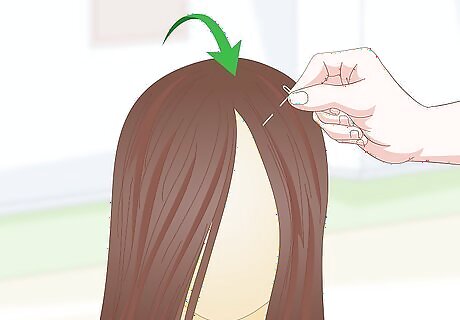
Pin your wig in place on a wig stand. Place several T-pins along the lace line, which is where the hairline starts, and place a few more near each ear to secure the wig to the stand. If you have a full-lace wig, place the pins near the hairline. If you have a lace-front wig, place the pins within the lace line. Check that the wig stand is straight. If it’s at an angle, your wig could end up with an accidental asymmetrical haircut!
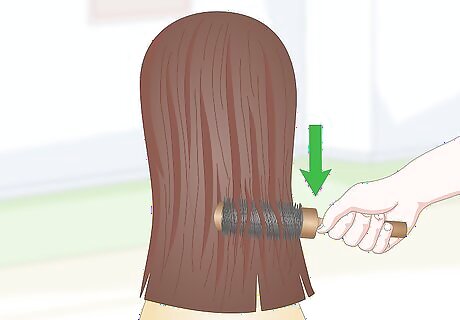
Comb or brush the hair to remove any tangles. Spend a few minutes gently brushing out your wig. You want to ensure that there are no tangles or sections of hair that aren’t falling where they should. Since your wig doesn’t grow back, you need to be patient when preparing to cut it. This is a great time to think about what length you want your wig to be if you don’t already know.
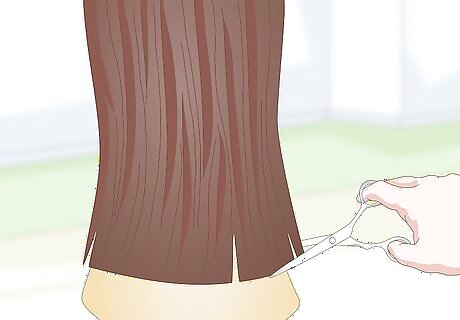
Start with the back of the wig and work in small sections. Move your fingers down the hair until they are at the length where you want to wig to be. Try to hold the hair so that it’s flat between your middle and index fingers, rather than bunched together. If you want to make a drastic change and go from long hair to medium-length or short hair, just adjust where you’re going to make the cuts to get the length you desire.
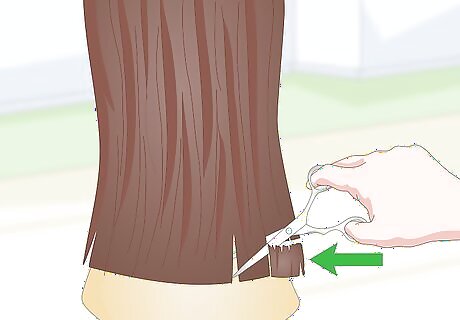
Cut the hair at a 45-degree angle, taking care to not cut your fingers. Use your hair-cutting scissors and cut up into the hair, trimming it across the entire length of your fingers. Make small, even snips to prevent any accidents. You could cut straight across rather than at a 45-degree angle, but the angle helps the hair look more natural than a straight, blunt cut would.
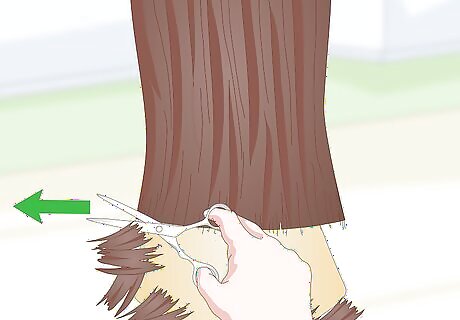
Trim the entirety of your wig until all the ends are the same length. When moving on to a new section, use some of the hair from an already-cut area to guide the trimming so everything ends up being the same length. Keep in mind that you can always trim or cut your wig shorter if you want to in the future, but you can’t make it longer!
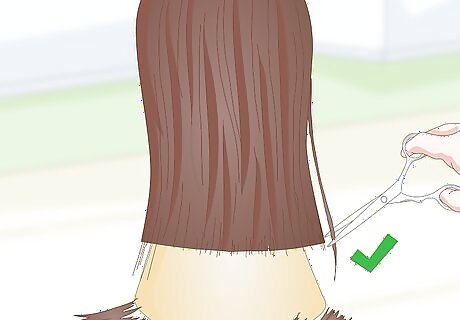
Snip off any loose, long hairs that you missed in the trimming process. Walk all around the wig, checking the ends for any long, scraggly hairs you might have missed in the trimming process. Snip them off to clean up your wig. Also check the length of the hairs on either side of the wig to make sure they are even.
Adding Layers to Your Wig
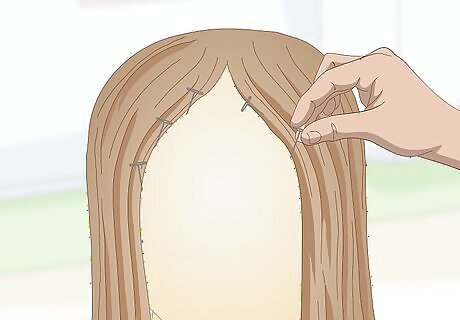
Place your wig on a wig stand and pin it into place. Put several T-pins in the lace line and in front of the ears to secure the wig to the stand. Check that the wig stand is straight, too! If you don’t have T-pins, you could also use basic sewing pins.
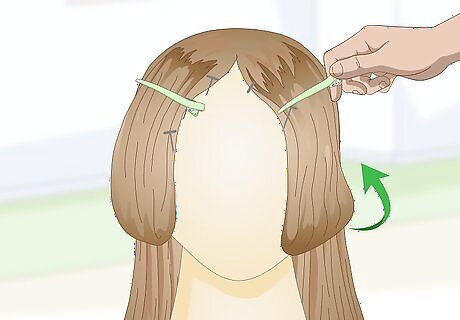
Clip the front sections of hair in front of the ears to hold them back. Use 2 hair clips, and gather the front sections of the wig into your hands. Clip the hair in front of where the ears would be to ensure it doesn’t accidentally get cut while you’re layering the back sections. You’ll layer the front sections, too, but it’s easier to start with the back and finish with the front since the back is the area that normally needs the most work.
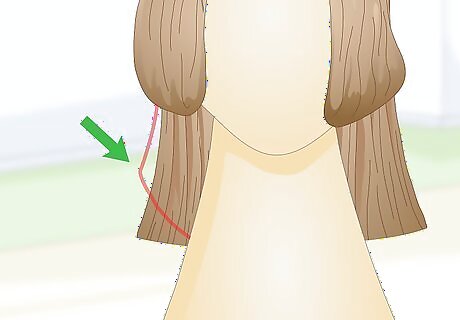
Decide where you want your layers to fall. Separate the top layers from the bottom layer of the wig hair. Leave the bottom layer in place—that will be the length of your wig. Then decide how long or short you want the layers to be. For example: You could layer the middle section to fall 1 to 2 inches (2.5 to 5.1 cm) above the bottom layer and then layer the top section to fall another 1 to 2 inches (2.5 to 5.1 cm) above the middle layer. Or, you could create multiple layers by separating the middle and top sections into even small portions. It all depends on how layered you want your hair to be!
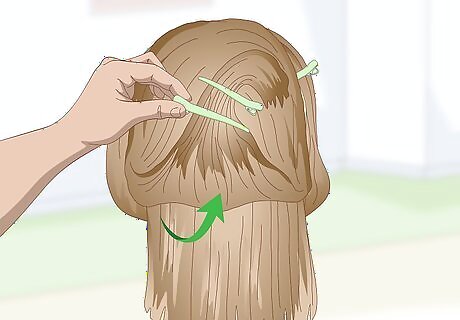
Pin the top section of hair so you can work on the middle section first. Use another hair clip and gather the top portion of hair so just the bottom and middle sections are left hanging down. Secure the top section of hair away from the rest of the wig by clipping it down near the front of the wig. It helps to use a comb to separate the sections if you’re having a hard time doing it by hand.
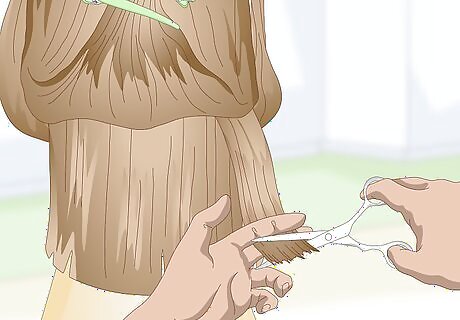
Hold small sections of hair between your middle and index fingers. Cut sections that are 2 to 3 inches (5.1 to 7.6 cm) across at a time. Position your middle and index fingers at the length you want the first layer to be, and cut upwards at a 45-degree angle toward your fingers. Be careful to not accidentally cut your fingers during this process!
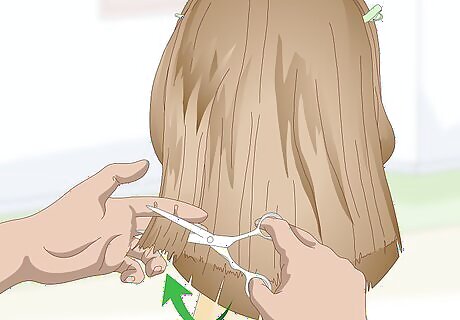
Take down the top layer of hair and repeat the layering process. Again, hold small sections of the hair between your middle and index fingers, and snip off the hair at a 45-degree angle. Brush or comb out the hair as you go along if you feel that the sections are starting to get tangled together.
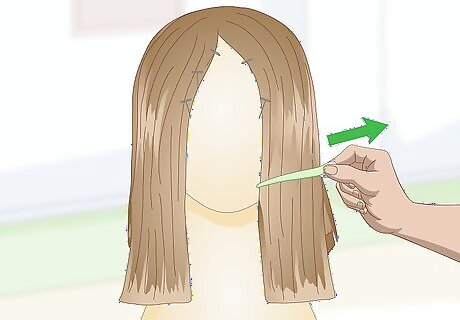
Stand in front of the wig and let down the 2 pinned front sections. Remove the hair clips and brush out the hair on either side of the wig. Think about how you want the layers to frame your face. With layered hair, it’s often the case that the front sections are shorter than the back sections.
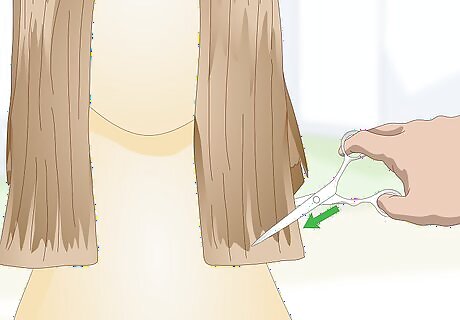
Create an outline by cutting the hair that frames the face first. With your scissors in your dominant hand, cut the sides of the front at a downward angle. Keep your elbow up in the air to help guide your hand in the right direction. A lot of people will start the framing around ear length—that way the shortest sections of hair are still long enough to be styled.

Layer the top and middle sections of the front parts of the wig. Similar to how you layered the back sections of the hair, cut the middle and then the top portions of the front of the wig, but cut at a downward angle rather than straight across. Section off the top portion as you work on the middle, and then end by layering the top. Remember to cut the front layers at a downward angle so that the hair will lay nicely with that front outline you created.
Cutting Bangs on Your Wig
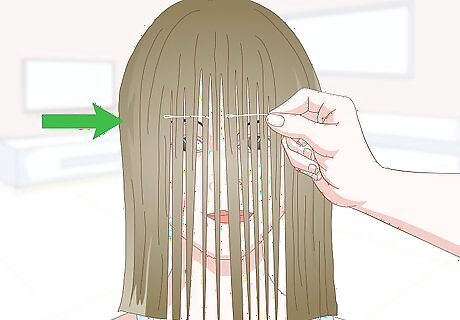
Try the wig on and place a bobby pin in the hair at the length you like. Because your wig stand may be a different shape than your own head, it’s smart to try the wig on first and determine where you want the bangs to land on your forehead. If you’re not sure of which style of bangs are right for you, try uploading your picture to a website that does virtual hairstyles—you can “try on” several different looks to see what you like best!
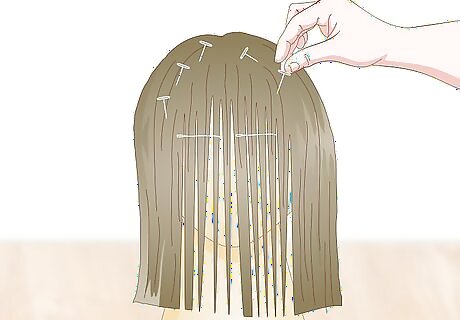
Set your wig on a wig stand and pin it in place. Use T-pins or sewing pins to secure your wig in the lace line and in front of the ears. You could also place a pin through the crown of the wig for a little extra security. Check that your wig stand is straight and not leaning off to one side!
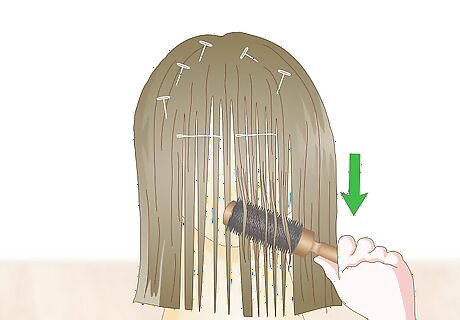
Brush forward the section of hair you want to use to create your bangs. Depending on what style you’re going for, you may want a thicker or thinner section of hair to cut. For full-front bangs, try to use more hair. For side-swept bangs, you can get away with a thinner section. Use a comb or brush to detangle the hair thoroughly before you start cutting.
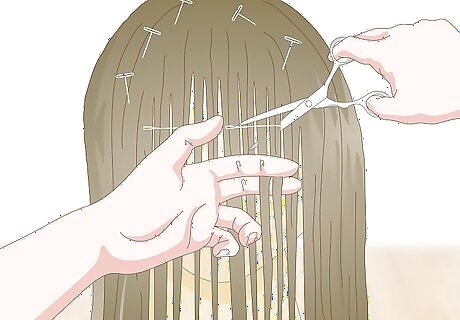
Take a small section of the hair and cut upwards toward your fingers. Keep in mind where that bobby pin is, and position the wig hair between your middle and index fingers at that length. Then take your scissors and cut up at a 45-degree angle toward your fingers to create the edges of your bangs. Be careful to not accidentally snip your fingers as you cut! If you’re concerned about the bangs being too short, cut slightly below the bobby-pin. Once you’re done, you can put the wig on and check the length and decide if you want to go any shorter.
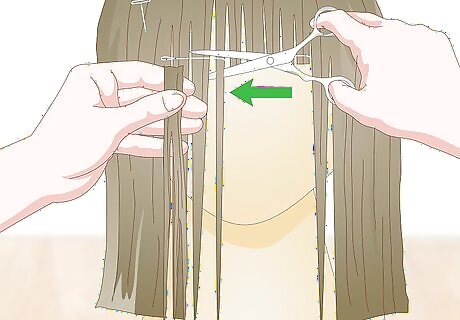
Use a piece of an already-cut section to guide the rest of your cuts. Each time you move on to cut the next section of your bangs, bring along a little bit of a section that’s already been trimmed. That way you’re more likely to keep your bangs even. Take your time when creating bangs in your wig—it might take a little longer, but remember that it’s much harder to fix a wig than it is to fix or grow out natural hair.
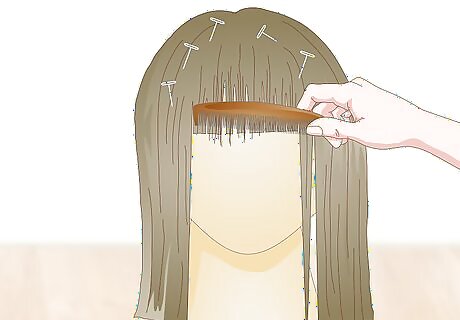
Comb the bangs down so you can see if they are even across. After you’ve finished cutting your bangs, use a comb to brush them down into place. You could even try on the wig at this point to see if you need to adjust the length any further. Combing the bangs helps pull down any long hairs you might have missed that still need to be trimmed.
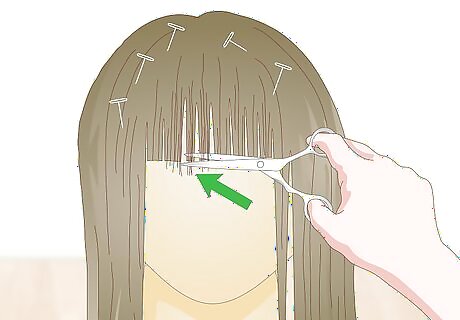
Trim any long hairs you might have missed, and you’re done! Use your scissors to carefully trim long, wayward pieces of hair that you missed in your initial cuts. Put the wig on to double-check the length, and you are good to go! Bangs can be super fun! You can pin or braid them back if you need to, and they can add a lot of style to your look.




















Comments
0 comment